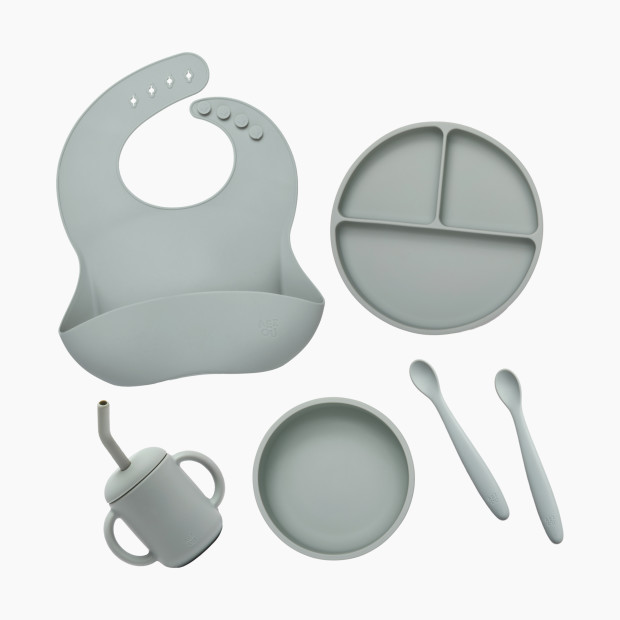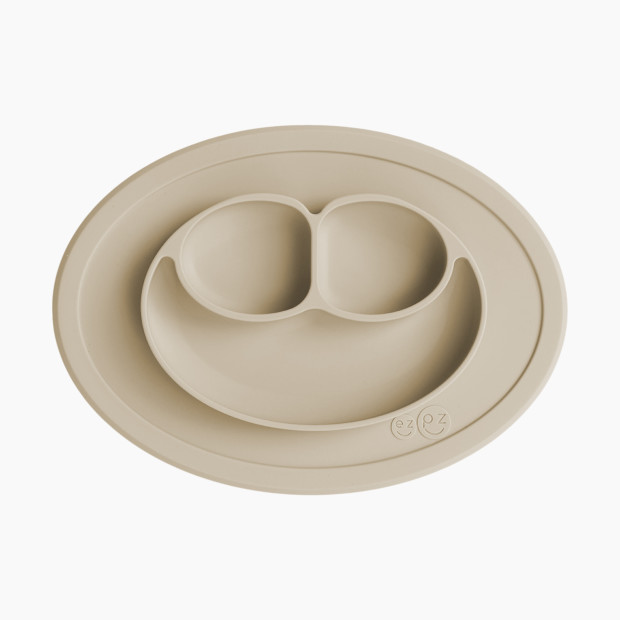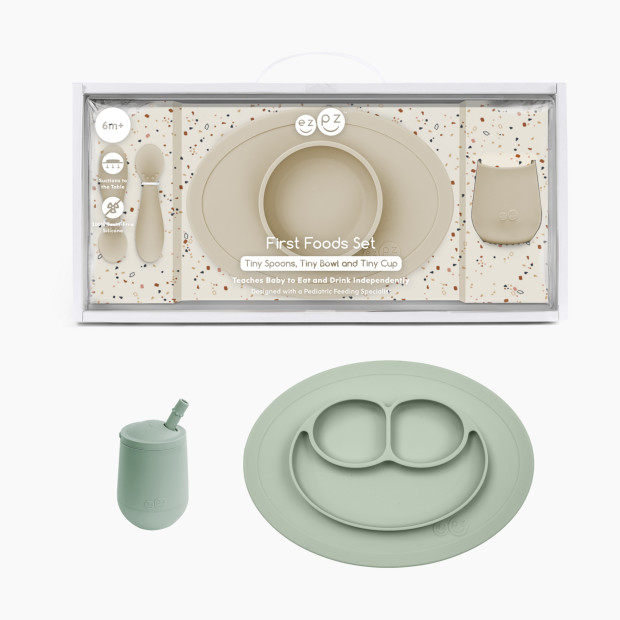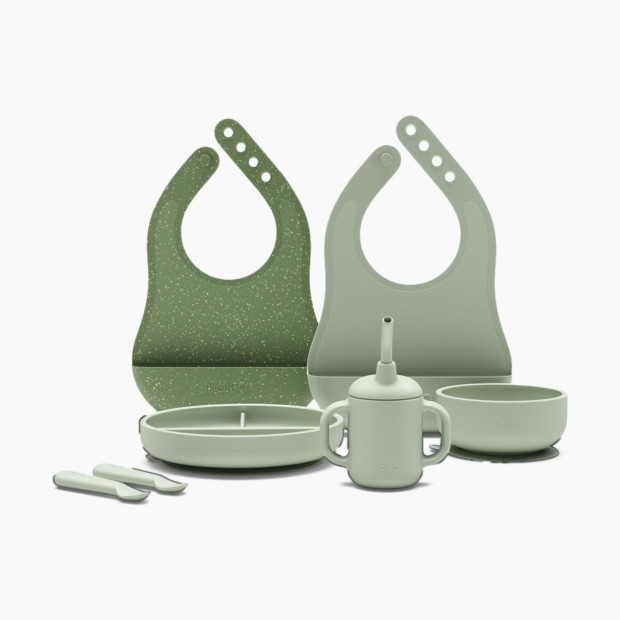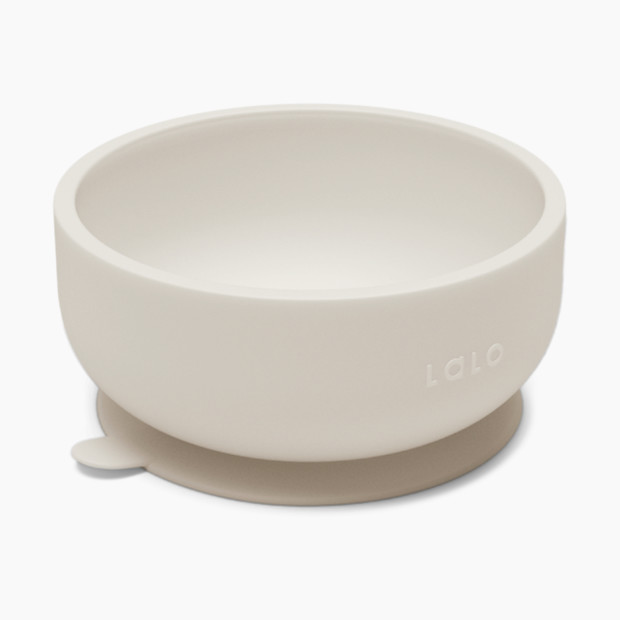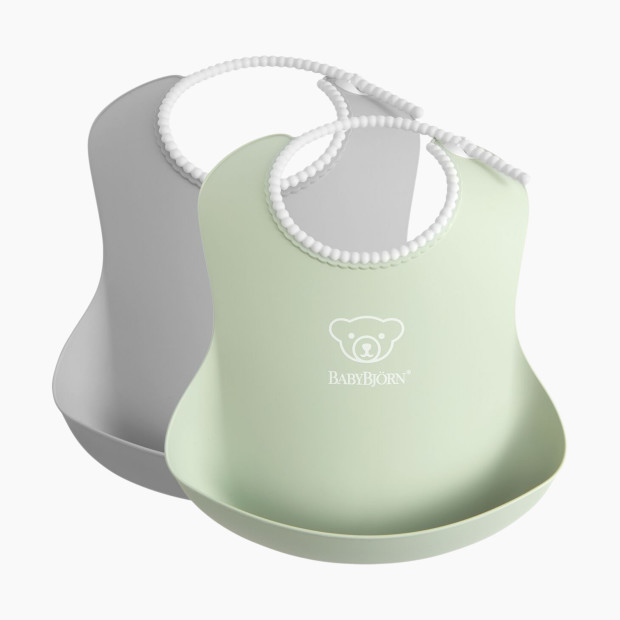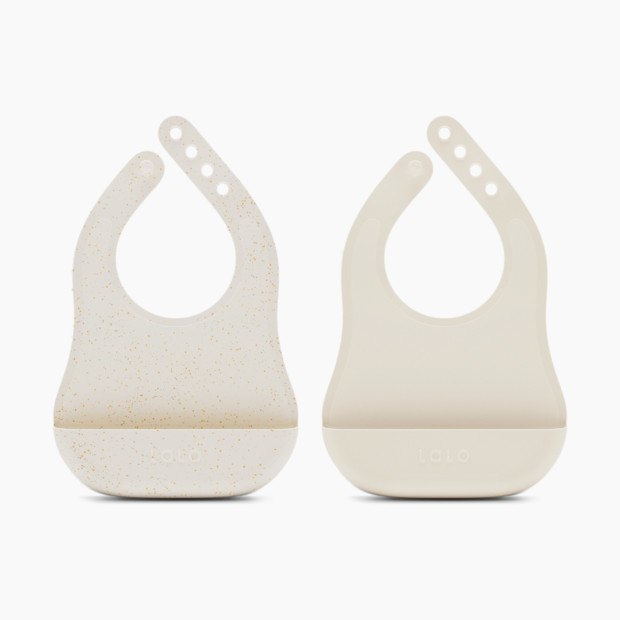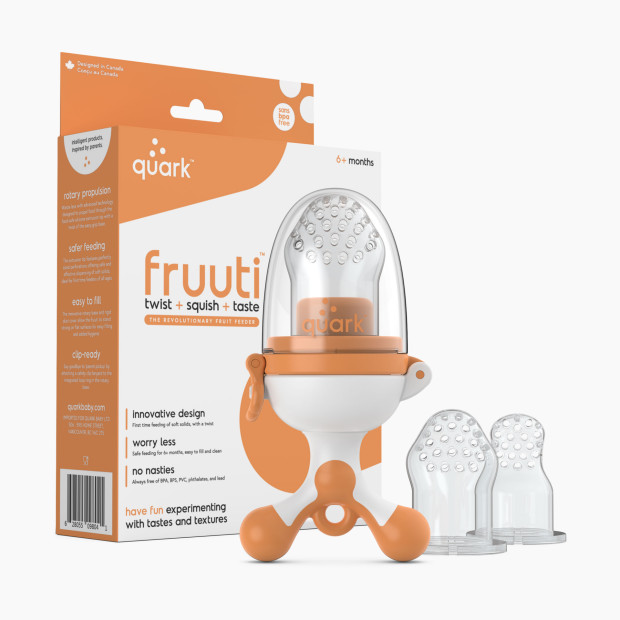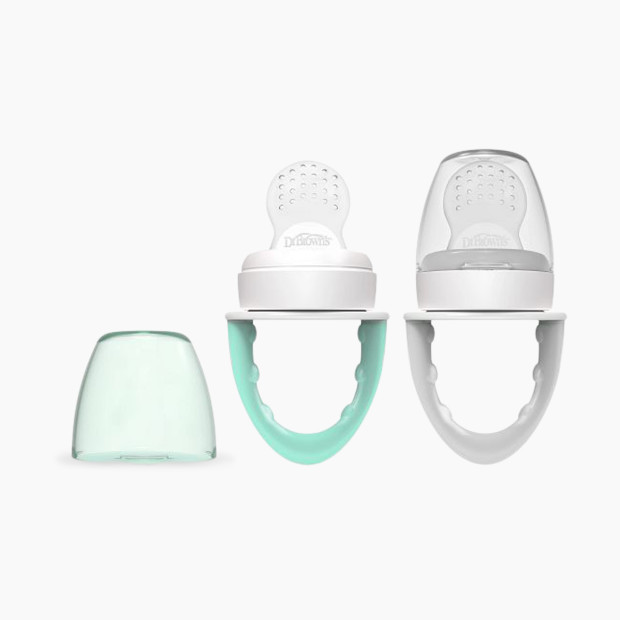
The Best Baby Feeding Tools for New Eaters
Bibs, plates, bowls and more! These baby-safe feeding tools are the best in their category, according to parents and experts.

In This Article
At around six months old, most babies will start eating solid foods, and that means learning to use feeding tools, too. Babies aren’t born knowing how to use things like spoons, bowls and cups—it’s a learned skill that takes time, practice and age-appropriate products.
Until your child is ready to transition to what the rest of the family is using, it’s a good idea to give them baby-safe feeding tools. A good starting point includes these basics:
3–6 unbreakable bowls and plates with suction cups
3–6 baby-sized, blunt-edge spoons and forks
2–4 open or straw sippy cups
2–3 silicone crumb-catcher bibs
2–4 specialized mesh teethers to help them learn to self-feed
There are tons of baby feeding tools out there, and some may be a better fit for your baby than others. That’s why we've rounded up a few standouts in each of the above categories based on what experienced parents say they love and what works best for babies in general.
- Best Cup
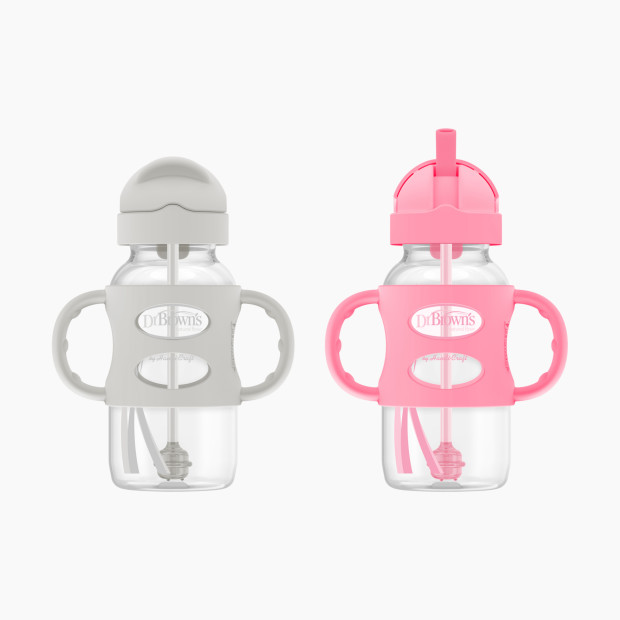 Dr. Brown's Wide-Neck Sippy Straw Bottle with Silicone Handles (2 Pack) - Gray & Pink, 9 Oz, 2From $8.19
Dr. Brown's Wide-Neck Sippy Straw Bottle with Silicone Handles (2 Pack) - Gray & Pink, 9 Oz, 2From $8.19 - Best Self-Feeder
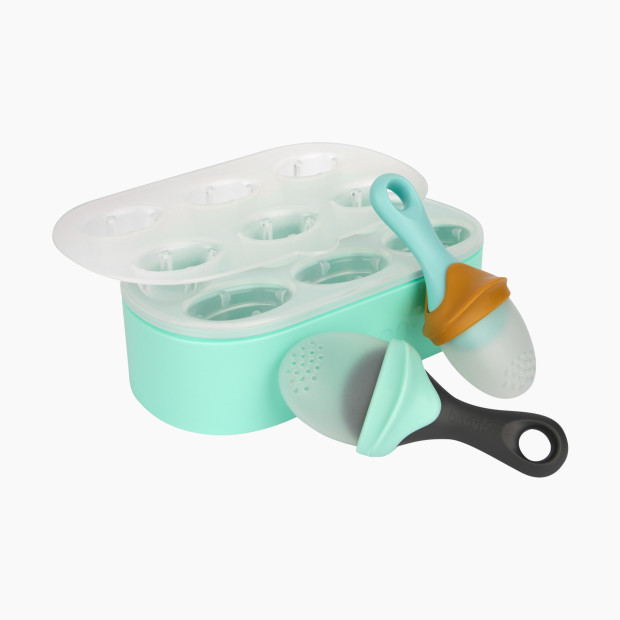 Boon Pulp Popsicle & Freezer Tray + Pulp Silicone Feeder BundleFrom $14.99
Boon Pulp Popsicle & Freezer Tray + Pulp Silicone Feeder BundleFrom $14.99
Why Trust Babylist?
Babylist is the expert in baby; we know baby gear inside and out. We talk with parents face-to-face in our showroom and on our user panels and hear from thousands annually via our Best Baby Products online survey. We know what items millions of expecting parents are adding to their baby registries.
Firsthand professional and personal experience. As a Babylist editor and parent of two, I’ve spent 8+ years researching and testing baby products—including lots of feeding tools. Through both professional expertise and personal experience, I understand what features work well for both babies and parents when it comes to baby-safe plates, bowls, bibs, spoons and more.
Expert POV. When introducing your baby to feeding tools, there are some developmental milestones to keep in mind. For expert advice in this area, I consulted the expertise of Dr. Mona Amin, a board certified pediatrician, IBCLC and founder of PedsDocTalk; Dr. Jonelle Anamelechi, a pediatric dentist; and Dahlia Rimmon, a pediatric dietician.
Feeding tool data. At Babylist, we regularly analyze the products our users are adding to their registries (and the products that they aren’t). Utilizing this data helps us narrow down the best baby feeding tools we should add to this guide.
Parent feedback and reviews. I also took into account hundreds of product reviews from parents who have used these feeding tools, so you can rest assured the products on this list are loved by both parents and the babies who use them.
How We Judged the Best Baby Feeding Tools
Best Baby Feeding Set
If you’re looking for all the basics to get your baby started with feeding tools, this complete feeding set includes everything you need: a suction plate with divided sections, a bowl with lid, two spoons, a straw cup and a bib. Made from BPA-free silicone, the pieces are soft, durable and super easy to clean (they’re dishwasher-safe!), not to mention stylish.
The singular suction cup on the bottom of the plate is strong enough to resist baby’s pull but easy for adults to take off (as opposed to multiple suction cups, which can take a little more work to release). “The suction on the plate and bowl works very well,” says Babylist parent Catherine P. “I have tried single suction plates and multiple suction plates, but AEIOU's single suction plate/bowl have worked the best for us.”
Parents also love the included bowl lid that allows you to easily store leftovers. The lid fits with an airtight seal, so food keeps for longer. “The bowl and plate are generously sized,” one parent says in a product review. “I love that a lid was included for the bowl (because we all know these babies are not finishing their meals).”
The adjustable bib fits a wide range of sizes and includes a large crumb catcher pocket, so less food ends up on the floor (and on your little one).
The straw cup includes a lid to help reduce spills, and the spoons are shallow to help baby catch all their food in the first bite.
If you’re looking to get all of baby’s feeding tools in one go, here are some other sets we love:
Best Baby Plate
This one-piece plate + place mat has everything that makes a good first baby plate: the place mat bottom helps it to not slide around, the sections keep food separated (especially handy with liquidy purees) and the whole thing is made from food-safe, high-grade silicone that’s dishwasher-safe. In a product review, one parent called it a “staple” for their baby’s mealtime, and lots of parents say it’s great for baby-led weaning.
Here are a few more plates Babylist parents love:
Best Baby Bowl
You’ll see a lot of suction bowls on the market—they’re popular for reducing spills and messes—but very few of them come with a secure lid for easy storage. This is my go-to bowl for all of my toddler’s meals both at home and on the go (it’s great for tossing snacks into your diaper bag). The BPA-free silicone makes it microwave-safe, so reheating leftover spaghetti is a cinch. Both the bowl and lid are also dishwasher-safe.
Don’t need a lid? These bowls are also well-loved:
Best Baby Utensils
These may not look like feeding utensils, but trust that they’ll do a better job than you might think at first. This design is known as a self-feeding spoon, and they’re recommended by experts to help babies with feeding independence early on (they’re often recommended for baby-led weaning, too). “Unlike a traditional spoon that curves (where purees or yogurt can easily slip off), self-feeding spoons better capture the food so it doesn't fall off before it reaches the baby's mouth,” says Dahlia Rimmon, a pediatric dietician. “Imagine how frustrated a baby would be if every time they brought utensil to mouth, there wasn't food there?”
These spoons also tick all of Rimmon’s boxes for what makes a good first spoon for baby: the soft silicone tips are gentle on gums and dishwasher-safe, and the short, wide handles are easy for little hands to grip. Parents love these self-feeding spoons, too: “These spoons make feeding so much easier,” says parent Lorena D. in a product review. “For those little hands they are easy to hold and grab onto,” says Crystal B. “My little one really likes holding these spoons and during meals the food stays on the spoons.”
Parents (and experts) also love these spoons, including both the self-feeding kind and regular bowl kind:
Best Baby Cup
Dr. Brown's Wide-Neck Sippy Straw Bottle with Silicone Handles (2 Pack) - Gray & Pink, 9 Oz, 2
From $8.19If your baby uses a bottle, pediatricians recommend weaning your baby off between 12 and 18 months, but you can get them practicing with a sippy cup even earlier than that. Pediatricians recommend going with either an open cup or a straw cup like these ones since they promote the type of swallowing needed for solid foods, as opposed to a cup with a spout. “Straw cups encourage proper tongue movement and can strengthen muscles used in speech,” says Dr. Mona Amin, a board certified pediatrician, IBCLC and founder of PedsDocTalk. “Sippy cups with traditional spouts don’t promote these same skills and can encourage a more infant-like sucking motion.”
But straws can often make it difficult to get all the cups’ contents. That’s why a lot of parents, myself included, love these weighted straw cups—the bottom of the straw always sinks to the bottom, no matter how your baby is holding the cup, so they can get every last drop.
Parents also love the wide handles on these cups, which make it easier for baby to keep a grip.
Here are a few other sippy cups with similar features:
Best Baby Bib
This was our pick for best overall bib, and it’s a favorite among Babylist parents who wrote into our annual Best Baby Products survey. Its defining feature: a magnetic closure that makes it easy for adults to put on and take off—no snaps or buttons required—but is still strong enough that most babies won’t be able to yank it off. The deep pocket catches spills and crumbs to help keep mealtime mess to a minimum, and the whole thing is waterproof and easy to clean. Lots of reviews also mention that it’s easy to store, since the magnetic closure lets it attach right to your fridge, dishwasher or any other magnetic surface.
If you’re looking for an adjustable neckline, Babylist parents also love these bibs:
Best Self-Feeder
Boon Pulp Popsicle & Freezer Tray + Pulp Silicone Feeder Bundle
From $14.99If your baby isn’t quite ready to use spoons at every meal yet—but they still won’t stop trying to get bites of your food—self-feeder training utensils like this one really come in handy. Just put a slice of fruit, some cooked veggies or even yogurt in it and let your little one gnaw away. Dr. Jonelle Anamelechi, a pediatric dentist, recommends self-feeders with a net-like shape like these because they can be chewed on.
Dr. Anamelechi says they’re also great to use as teethers. Using the included popsicle tray, these silicone self-feeders can be frozen (with or without food inside) to provide relief to sore gums.
Other self-feeders we love:
When do babies start using feeding tools?
Most babies are ready to start using feeding tools like spoons, forks, and cups around six months old when they begin solid foods. The CDC recommends starting solids around this time, as most babies have reached the necessary physical milestones to safely eat anything other than breast milk or formula.
In the beginning, babies will use their hands to explore food, but introducing simple feeding tools early on helps them develop hand-eye coordination and fine motor skills. A soft-tipped spoon and a shallow suction bowl is a good place to start. It’ll be a bit messy at first, but as your baby grows, they’ll gradually become more coordinated.
What to Look for In Baby Feeding Tools
When choosing feeding tools for your baby, the most important things to consider are features that fit your baby’s developmental stage. Utensils that are too heavy, bowls that are too deep or plates that slide around everywhere are going to pose a bigger challenge in the self-feeding learning process.
Plates & Bowls
Whether you opt for silicone, bamboo, stainless steel or anything else, your baby’s plates and bowls should first and foremost be durable. Glass, ceramic and other breakable materials can pose a hazard, especially if dropped, so it’s best to go with materials that can withstand being thrown off a high chair.
Additionally, many infant plates and bowls (like the ones in this guide) feature silicone suction cups on bottom to help them grip the table or high chair tray. Suction cups aren’t necessarily a must-have, but they can really help prevent the plate from sliding around as baby tries to load food onto their spoon—a stabilized plate is much easier to eat off of. (Not to mention the suction keeps the plate from becoming a projectile.)
Shallow rims are also something to look for, since they make it easier for food to be scooped out. New eaters who don’t have good dexterity may have a hard time scooping food out of deeper plates and bowls.
Utensils
When it comes to utensils, spoons are all your baby will need at first. “I recommend spoons, not forks, to begin with,” says Rimmon. “Forks require more coordination. Let them master spoons first.”
Specifically, Rimmon says to look for spoons with short, wide handles that are easy for little hands to hold and manipulate. Also, “I like spoons made from food-grade silicone for safety and they are easy to clean—usually dishwasher safe,” Rimmon says. “Plus, they are gentle on gums compared to hard plastic and stainless steel.”
Cups
Some babies are able to transition right to an open cup, while others use a sippy cup first. Whether your baby uses a sippy cup or an open cup entirely depends on their individual preference, but straws are typically the easiest to transition from bottle to cup. And like Dr. Amin says, straw cups encourage a better sucking and swallowing method as opposed to spouts. Trying a variety pack of sippy cups can help you determine what style works best for your baby.
Wide handles and lightweight materials can make it easier for baby to hold, and if you’re looking for something that’s easy to clean, keep in mind that straws and spout lids may have crevices where germs can hide.
Bibs
Bibs come in lots of different shapes and materials, and when it comes to keeping messy eaters clean, there are a few specific things to look for. A wide, crumb-catcher pocket and water-resistant, wipe-clean material like silicone or plastic make for easy clean up. An adjustable neckband is a good idea if you’re hoping to use the bib for a long time as your baby grows, and a firm closure is important to keep your little one from chucking their bib on the floor.
As far as shape and size, larger bibs will cover more area and generally keep your baby’s clothes cleaner, but they can also limit your baby’s movement and get stuck between them and the table or high chair tray. When your baby is younger and just starting to eat solids, it may be a good idea to use smaller bibs first so they’re not overwhelmed by it.
Expert Sources
Babylist content uses high-quality subject matter experts to provide accurate and reliable information to our users. Sources for this story include:
Dr. Mona Amin, board certified pediatrician, IBCLC and founder of PedsDocTalk
Dr. Jonelle Anamelechi, pediatric dentist
Dahlia Rimmon, pediatric dietician
